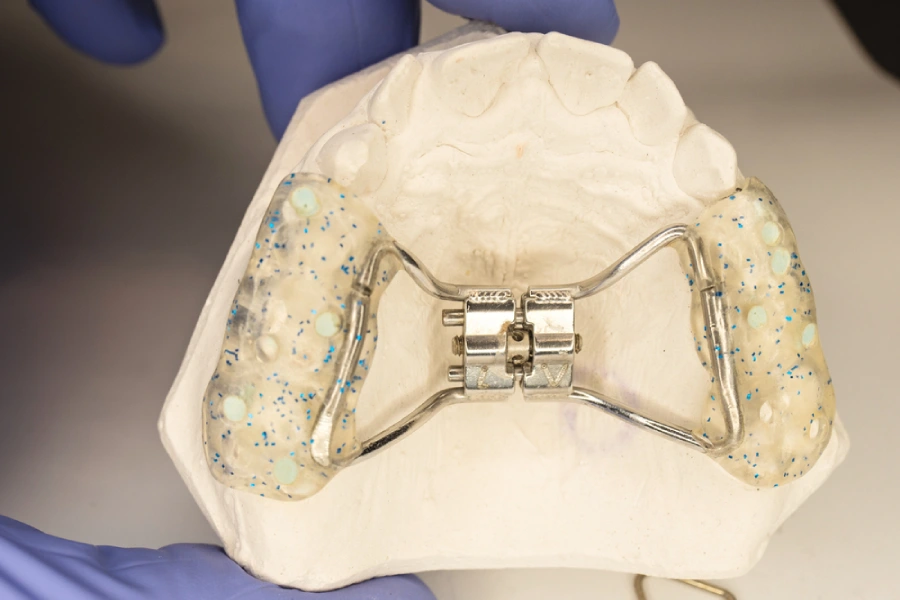Did your child’s dentist mention that they might need a pulpotomy? We understand that news like that can be alarming, So we’ve created this guide to walk you through the pulpotomy procedure step by step.
Let’s start with a little background, and look at what a pulpotomy is and how it’s different from some procedures that are somewhat similar. Then we’ll examine how the procedure is performed and some of the things that you can do to help make it easier for your kids (and for you).
What is a pulpotomy?
A pulpotomy is a procedure in which a dentist removes part of the tooth’s pulp to prevent, or treat, the formation of an abscess. A pulpotomy for children is usually performed to buy some time so the baby tooth can remain until it falls out naturally. Generally speaking, a dentist will only perform a pulpotomy on primary teeth, and different procedures are necessary for permanent (secondary) teeth.
When might a child need a pulpotomy?
A pulpotomy is performed then a deep cavity in a baby tooth reaches the nerve. Baby teeth are softer than permanent teeth, and can decay more quickly, so when this sort of cavity occurs removing the infected pulp tissue can help save the tooth and prevent tooth extraction.
As Healthline explains, “Baby teeth help maintain spacing for the permanent teeth that will follow, so leaving them intact is often a priority.” This is why many dentists, including The Super Dentists, recommend a pulpotomy for baby teeth instead of removal. It is critical to restore baby teeth for future development.
If your child has a deep cavity, sometimes called a primary tooth abscess, they may complain about the pain in their mouth. The toothache caused by an abscess can be pretty intense. There are generally warning signs tied to a decayed tooth, including
- Sensitivity to hot and cold
- Trouble focusing at school
- Tooth discoloration
- Bad breath
- Bleeding gums
- General toothache
If you see any of these indicators, you may want to schedule an appointment with your dentist right away.
Pulpotomy vs Pulpectomy
When someone has a dental abscess in a permanent tooth, their dentist may recommend a pulpectomy. As the names suggest, a pulpectomy and pulpotomy are fairly similar, except that a pulpectomy is designed to remove ALL of the pulp from the inside of a tooth, whereas a pulpotomy removes only some of it.
The International Journal of Community Medicine and Public Health explains that a pulpectomy is performed on a tooth that has already died or is infected. When a tooth nerve dies, it no longer responds to heat or cold, and has no sensation.
When a tooth is alive, on the other hand–and particularly if there is the hope of keeping the affected tooth intact and alive, the dentist will opt for a pulpotomy instead. As we explained above, this is generally the goal with baby teeth in particular.
Pulpotomy vs Root Canal
Pulpotomies are also related to root canal procedures, but here, as with pulpectomies, they are not quite the same. In fact, a root canal has more in common with a pulpectomy than a pulpotomy. As Colgate explains, “A pulpectomy is the process of removing all of the nerves within the tooth and cleaning out the infection. Root canal treatment takes this a step further by filling the emptied and sterilized canals with a sealing material.”
How is a pulpotomy performed?
Things are often less scary if we know what to expect. This is certainly true of a pulpotomy. Because you know your child better than anyone, we thought it best to walk you through the pulpotomy procedure step by step, so that you can determine how best to explain it to them.
Your dentist will begin with X-rays which will help them to determine the need for the pulpotomy. This may happen on the day of the dental procedure or in advance.
Then they will numb the area around the abscessed tooth with a local anesthetic. As Healthline explains, “This injection typically doesn’t hurt, although you may feel a slight, fleeting pinch.”
Next, using a dental drill, your dentist will make an opening in the top of the tooth to access the pulp chamber. The infected or inflamed pulp is removed using a dental drill or other instruments.
The remaining healthy pulp in the roots is treated with medication to help prevent infection.
The opening in the tooth is then sealed with filling material, such as a composite resin. This is often a temporary filling to protect the tooth until a permanent crown can be placed. A follow-up visit is scheduled to monitor the healing process and ensure that the tooth is healthy.
As you can see, a pulpotomy is not a terribly involved procedure, and the relief that it brings from the discomfort your child has been feeling makes it well worth the effort.
If your child is experiencing pain in discomfort in their teeth, visit your pediatric dentist right away. This is the best way to see if a pulpotomy is the right procedure for primary tooth restoration for your child.
Learn more about Pulpotomies and other Pediatric Dental Treatment Options at The Super Dentists. Schedule an appointment today and bring your family to a Super Dentists location near you!










